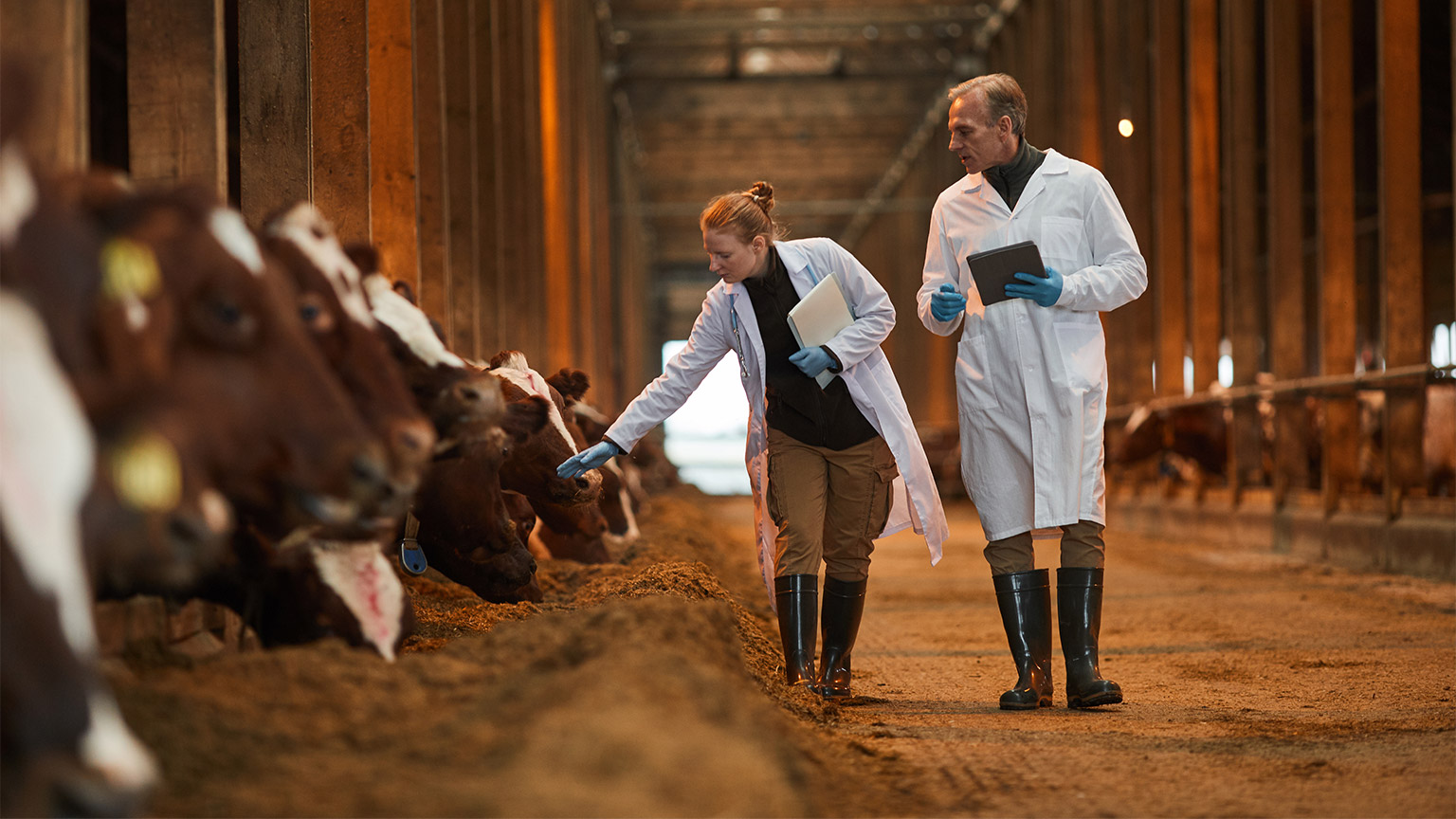Workplace Health and Safety (WHS) is an extremely important issue in the workplace, as a safe work environment contributes to effective productivity and positive staff morale.
Workplace injury costs Australian industries millions of dollars a year in:
- loss of productivity and workers' time
- medical expenses
- rehabilitation.
Costs to the injured worker may include:
- loss of pay (not always compensated)
- loss of lifestyle
- stress on family relationships due to the injury-causing lifestyle changes and financial hardship.
Therefore, it is in everyone's best interests to ensure safety within the workplace.
Watch
Watch the next few short videos to give a quick overview of WH&S information, rights and legislation in Australia.
Pre-start Checks
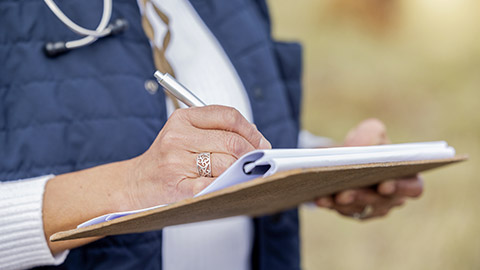
Staff should regularly endeavour to carry out pre-start checks when starting each day. Following your clinic policies and procedures, these will be carried out as required.
Some of the pre-start checks could include, but are not limited to:
- assessing animals' behaviour
- checking animals' cage cards, charts, history, or any other communication for notification of animals’ temperament/behaviour
- checking PPE and restraints for signs of damage, weakness, or any other reason it may fail its normal functions and put self, others, or animal at risk
- checking for other animals or staff that may cause issues when handling this animal
- checking for any structures, equipment, or machinery that may cause issues when handling an animal
- ensuring the patient theatre/surgical list is completed
- ensuring all equipment is in working order and filled and ready for use
- ensuring all relevant forms are printed (these forms include but are not limited to consent forms, cage cards, feeding plans, microchipping paperwork, treatment sheets and daily task sheets)
- ensuring all in-house animal cages are cleaned, fed, watered, and litter changed
- ensuring in-house animal drips are checked and changed if required
- ensuring all incoming patients are admitted and forms checked, filled in and signed by owners and staff
- ensuring the surgery is set up for the day's procedures
- checking anaesthetic machines are checked and working correctly
- washing (if required) is done, and any dry blankets or other supplies are folded
- checking the reception area to ensure it is ready for the day. This includes switching over the phones from night mode, putting the cash float in the register, starting the computers and checking over the building and animals to ensure there are no signs of break-ins, broken cages or injured animals.
You must carry out your pre-start checks as required so that the clinic's procedures for that day run efficiently and there will be no delays.
Example: Animal Behaviour Checklist
Check out the small extract from the Happy Paws Animal Behaviour Checklist.
Example: Clinical Surgery Theatre Checklist
Check out the small extract from the Happy Paws Animal Surgery Theatre Checklist.
The WHS Roles and Responsibilities of Employees, Supervisors and Managers in the Workplace

Everyone in the workplace is responsible for ensuring the health and safety of not only themselves but others. Duty holders will include employers, such as Persons Conducting a Business or Undertaking (PCBUs) or their officers, employees and other personnel at the workplace.
You will need to ensure that you are aware of your exact role in the workplace, the duties you are required to perform, and how you are required to perform them.
Think about the people you work with at your workplace or the jobs common in your industry. What category do you fall into? Can you name a colleague with a job title that falls into each category? The following are some examples of the information based on each duty holder.
Duty holders include the following personnel:
- employers (PCBU’s and their officers)
- employees
- other personnel.
Watch
The next couple of videos provide more information about Work Health and Safety in Australia.
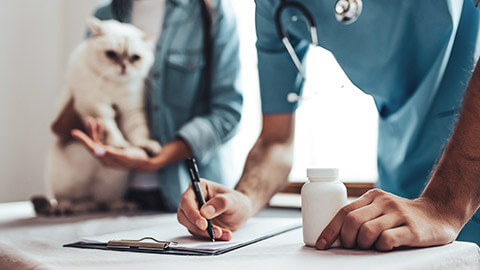
There are laws relating to WHS in the workplace that employees and employers must comply with. These laws aim to reduce the occurrence and effects of workplace injury on Australian workers and the industry.
The applicable legislation and accompanying regulations are largely administered at the state/territory government level. In 2012, most states and territories came together to harmonise their respective legislation and regulations. However, not all states wanted to participate, and therefore, there are still some differences.
Acts will often refer to the phrase 'duty of care'. This is the care owed by one person to another. In this case, with WHS, a duty of care within a workplace environment includes the responsibilities of both employers and employees.
Employers
An employer must do the following:
- provide a safe working environment for employees
- provide safe systems of work and safety procedures
- maintain machinery, plant and equipment so that it remains in a safe condition
- store and use substances in the workplace according to the manufacturer's instructions
- provide information, instruction, supervision and training to ensure each employee is safe from injury and risks to health.
Employers must undertake all of these tasks in consultation with their workers. Workers have rights that correspond to each of these things. For example, workers have the right to receive adequate and appropriate information, instruction, training and supervision to perform their work safely.
Employees
An employee must do the following:
- work safely so as not to damage work equipment
- use equipment and products as per manufacturer’s instructions
- handle chemicals and drugs safely
- store chemicals and drugs as per the manufacturer’s instructions
- report any hazards, illnesses, or injuries
- take reasonable care of their health and safety; for example, use personal protective equipment (PPE) if provided
- take reasonable care of the health and safety of others
- comply with any reasonable instructions, policies, and procedures provided by the employer, business or WHS representative
- report any unsafe practices or equipment
- be involved in the process of checking for hazards
- be involved in the process of making hazard and risk assessment
- be involved in the process of controlling risks.
To ensure that all these responsibilities are met, workers must comply with the organisation's rules, follow the prescribed procedures and report any hazard to their supervisor. Furthermore, workers should also be involved in the process of making assessments.
Employee involvement in risk management can be encouraged through the consultative arrangements agreed to at the workplace, such as a health and safety committee, health and safety representative or through other agreed arrangements.
Reporting
In the workplace, incidents of any nature, ranging from injury to misconduct or unsafe work practices, must be documented and reported.
It is the responsibility of the employers to adequately train their staff to recognise reportable incidents, complete a report, and inform them of the relevant persons who need to be notified.
It is the employee’s duty and responsibility to report any incidents they observe or witness that may present a danger to themselves and those around them, including fellow employees and the animals in their care. The following is a list of circumstances that may require reporting:
- injury in the workplace, such as a fall, cut, burn or bite from an animal
- unsafe work equipment or machinery that may present hazards or risk of harm to the operator
- professional misconduct, including bullying and harassment of any nature in the workplace.
Consider the following scenario
25 May 2022
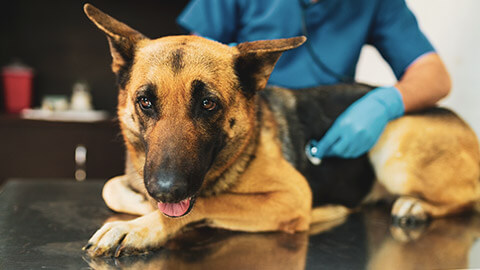
It is 10.15 am at Bray's K9 Rescue and Rehabilitation.
A regular patient, a 7-year-old German Shepherd, Boss, has come in with his owner. Boss has a limp and has been taken to the consultation room.
Boss is generally happy and friendly but is visibly in a lot of pain. When the vet, Ian Mitchell and the assistant, Eugene Smith, attempt to move Boss to examine him, he snaps and growls, nipping Eugene on the hand in response to his pain. Eugene’s hand is bleeding from the bite, and it looks as though the bite has penetrated the skin quite deeply and needs medical attention.
An incident report needs to be filled out based on the injury sustained during the consultation. Review the completed sample Bray's K9 Incident Report Form (pdf) based on the scenario. It is important to consider that not all incident reports will be set out the same. This is one example of how a form may be structured.
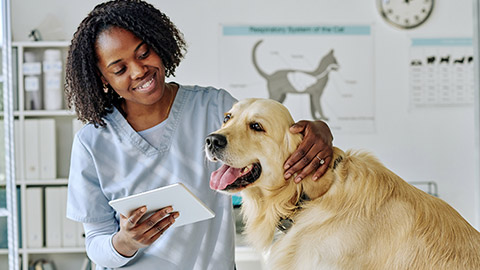
In addition to the legislation and corresponding regulations, industries may have their Codes of Practice or Codes of Ethics relating specifically to their area of work.
For example, Australia's pet industry has a national code of practice. This document makes employers and employees in the industry aware of some of the hazards they may be exposed to and suggests methods of minimising the associated risks.
Another example of an industry association's resources is the Australian Veterinary Association, which has a series of resources available on WHS in veterinary practice.
Some examples of additional codes of practice:
Australian Animal Welfare Standards and Guidelines:
These standards provide national guidelines for the care and management of different species, including livestock, companion animals, and animals used in research.
Model Code of Practice for the Welfare of Animals:
Developed by the Animal Welfare Committee of the Agriculture Ministers, these codes cover a range of species and are intended to be adopted by states and territories.
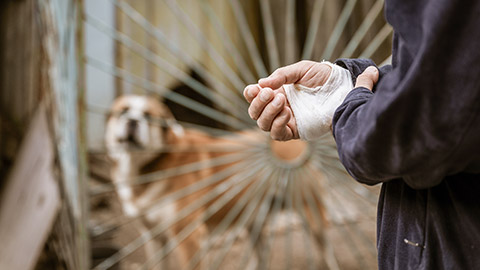
If a worker is injured, becomes ill or dies in employment, they or their family may be eligible for Workers Compensation. This is a form of insurance that covers:
- Wages while an employee is not fit for work.
- Medical expenses and rehabilitation.
Workers Compensation: The Complete Guide
- Rules change per state, so make sure you do your research.
- Workers compensation is beneficial for both employer and employee.
- Types of worker compensation
- Statutory workers compensation
- Comcare workers compensation
- Self-insured workers compensation
- Ensure you are classifying your employees correctly to avoid fines.
- Workers compensation insurance premiums are generally tax-deductible.
- Consider using a reporting system to protect both your business and employees.
Each State / Territory administers its Workers Compensation scheme, for more information refer to the Fairwork website.
Watch
The next video is a representative from Allianz explaining the Worker's Compensation Process.

By law, businesses with more than 50 employees are required to have a WHS representative within the workplace. They represent the health and safety interests of employees within their organisation. Duties include:
- inspection of the workplace and identification of hazards
- reporting hazards to the employer
- investigating the risk of serious injury to, or harm to, the health of any person
- investigating accidents and dangerous occurrences
- keeping informed on current WHS information
- Liaise with employees and provide training where necessary.
Example: Happy Paws WH&S Representative Job Description
This representative may be a volunteer undertaking these duties and other employment responsibilities (common in medium-sized businesses). They may be a full-time employee dedicated to WHS and may even have a team of assistants (common in large national organisations).
If you require information on your place of employment's WHS policies and procedures or you need to report a hazard, incident or near miss, then you may contact the WHS representative; however, make sure you also consult with your direct supervisor so that they are aware of the situation.
If your workplace doesn't have a WHS representative, and you believe it, you should consider volunteering for this role yourself. You can attend accredited training courses that will instruct you in all the required skills and knowledge, and they can be a rewarding inclusion in your regular duties.

Watch
The next video is an animation from Work Place Wa about Workplace representatives.
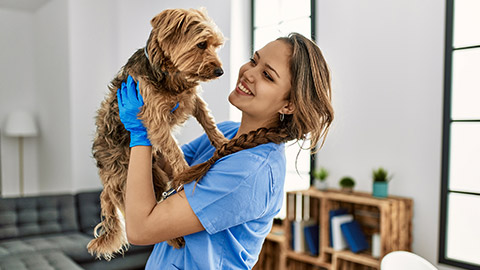
Standard Operating Procedures (SOP's) are detailed documents that outline how to safely and effectively complete a task. These documents will include details such as potential health and safety issues and control methods for minimising the risk associated with potential hazards. SOP's should be readily available to all staff members and consulted when completing an unfamiliar task.
Safety Systems
Safety systems are in place to ensure the workplace is able to keep track of injuries and accidents that may have occurred. These are documented in line with WHS policies and procedures to ensure the safety of all those in the workplace is actively maintained.
You will be able to locate information on WHS in several locations in the clinic. These sources may include:
- clinic policies and procedures
- intranet
- posters
- induction package
- veterinarian
- practice manager.
In addition to these resources, there will be records kept on injuries and accidents that may have occurred. Some may be recurring from time to time, and where this is the case, then the policies and procedures may need to be evaluated to determine why they are continuing to occur.
If you cannot find the information you need then please check with your supervisor for further information. If, for any reason, any of the information is difficult to interpret or unclear in any way, it would be advisable to have a chat with your supervisor to seek clarification. Sometimes, written documentation can be vague and misinterpreted, so it’s always vital to ask to ensure you are on the same page and avoid doing the wrong thing.
Relevant WHS Information
In Australia, all clinics must comply with relevant WHS legislation, standards, and codes of practice. WHS laws make all parties within a clinic responsible for the health and safety of workers and others. To work safely, you will need to locate and interpret information that relates to WHS in your work area. The following information will assist you in identifying your responsibilities concerning safety:
- applicable commonwealth, state or territory WHS legislation
- regulations
- standards
- codes of practice
- industry standards/guidance notes relevant to own work, outlining role and responsibilities.
Contributing to Safety and Safety Systems
Employers must provide a safe clinic, and workers will be required to work in a way that does not endanger themselves or others. This means you need to follow all workplace policies and procedures/systems that relate to your work role. Employees, therefore, have a legal obligation to familiarise themselves with OHS/WHS law, and their organisation’s OHS/WHS policies and procedures, which give guidance to workers about their responsibilities, reporting procedures, recording requirements, emergency procedures and other relevant OHS/WHS matters.
You can contribute to safety systems in the clinic by:
- identifying hazards
- assessing risk
- addressing identified hazards
- evaluating the corrective actions
- regularly reviewing the entire process to ensure the hazard is controlled or eliminated.
To do each of these things, you need to know and understand the policies and procedures that relate to your work role. This may include:
- evacuation procedures
- health and safety procedures
- incident and accident reporting
- documentation requirements
- hazard and risk reporting.
When a hazard is identified that you cannot correct or inadequacies in control measures are identified then you are to report it.

Contributing to Meetings
As you progress through your career and work through various workplaces, you will find many will facilitate meetings. These meetings may take place weekly or monthly, depending on the procedures of the workplace. Team meetings are usually an opportunity to discuss what has occurred throughout the week, plans moving forward, changes to workplace policies and procedures, possibly training, and, of course, keeping staff up to date on their WHS/OHS knowledge and practices.
The topics discussed in meetings are usually outlined in an agenda, which is often circulated before the meeting to familiarise the team with what the meeting will cover. No matter your position in the team, whether you are starting or a senior vet, should you have any concerns, you are encouraged to raise them during these meetings if not before. You must make active contributions to these meetings to cover any questions, concerns or feedback on current practices. You will often find that the questions you may have are also considered by others, so it is always best to ask.
Watch
The next video gives some tips on how to contribute to meetings.
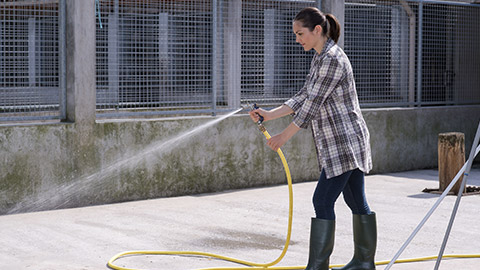
Housekeeping refers to how the premises are kept to help avoid injury and illness. In emergencies, this is particularly important because the internal environment can become quite a dangerous place very quickly if the right housekeeping measures are not kept.
It is important to understand, a large number of incidents or near misses occur in poorly designed clinics or untidy work areas, rather than in a clean and well-maintained work environment. It is very important not only for the reduction of injury but for health-associated illnesses, that close attention to housekeeping in the clinic will reduce the possibility of an incident or near miss occurring and make the clinic a more pleasant environment to work in.
Some of the main areas that will need to be covered when housekeeping activities are undertaken include:
- walkways
- storage
- general cleanliness
- lighting.
Let’s look at each of these in further detail.
Walkways
Walkways can often be busy places where people and animals travel through to treatment rooms at different times throughout the day. They are also often the pathway for emergency evacuations, so these areas must be kept clear of boxes of stock and equipment.
Storage
Storage areas are where the medical supplies, stock, materials and equipment are kept. These areas are frequently used and need to be kept clean and tidy at all times. Systems need to be in place when considering medical supplies as many have expiry dates on them. Therefore, they need to be stored closer to the front of the shelving for first use. Shelving areas should be clearly labelled with what supplies are where for those who need to retrieve them in a hurry. The flooring should also be kept clear to avoid trips or falls along with possible damage to equipment.
General Cleanliness
Working in a veterinary clinic is virtually no different to working in a hospital. Keeping your workplace clean is paramount, especially when you are dealing with various animals and conditions. You need to ensure adequate sanitisation and cleanliness, which are top priorities. Animal faeces and bodily discharge are often a common occurrence in these settings. Therefore, veterinary-grade disinfectant must be used when cleaning between consultations and before closing for the day.
Benchtops, countertops, and treatment areas all need to be appropriately cleaned down before treating the next patient. Flooring needs to be mopped and swept in the event of spills and before the close of business in all areas of the clinic, including:
- waiting rooms
- staffrooms
- treatment rooms
- restrooms
- examination rooms.
These areas should also be vacuumed at least once a day to pick up any debris, including dust and hair.
When considering medical procedures and the use of medical equipment, the equipment needs to be sanitised, and PPE needs to be changed between patients.
Fun fact
Did you know there were specific types of disinfectants used for veterinary clinics?
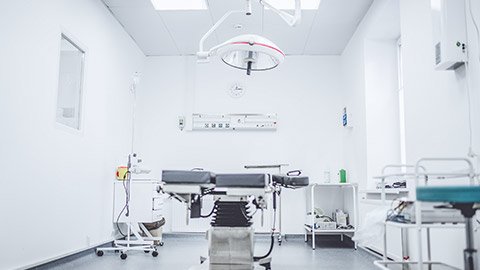
Lighting
The area in which you work must be kept well-illuminated to ensure procedures and observations are carried out carefully and thoroughly. Insufficient lighting can cause eyestrain and unsafe workplaces. Therefore, any lighting concerns need to be documented, reported and replaced where possible.
How to Keep Track of Housekeeping
One of the best ways to keep track of all the housekeeping tasks is with a checklist. Most workplaces will have a checklist they keep for each employee to use at the end of the day to ensure all the appropriate measures have been taken and no tasks are missed. In light of the recent COVID-19 pandemic, no workplace should be a stranger to the importance of adequate and thorough cleaning and sanitisation.
The following is an example of a sample checklist that can be followed to ensure housekeeping tasks are carried out.
| Task area (includes area needing to be cleaned) | Date (date carried out) | Time (in some environments cleaning tasks must be carried out more than once daily, depending on circumstances, will be between consults and at end of day) | Completed by (Needs signature or initial from person who carried out the task) |
|---|---|---|---|
| Waiting room | |||
| Reception | |||
| Exam room 1 | |||
| Exam room 2 | |||
| Staffroom and kitchen area | |||
| Client restroom | |||
| Staff restroom | |||
| Kennels | |||
| Animal food prep area |
Watch
Watch the next couple of videos providing some examples of cleaning in animal care facilities.
